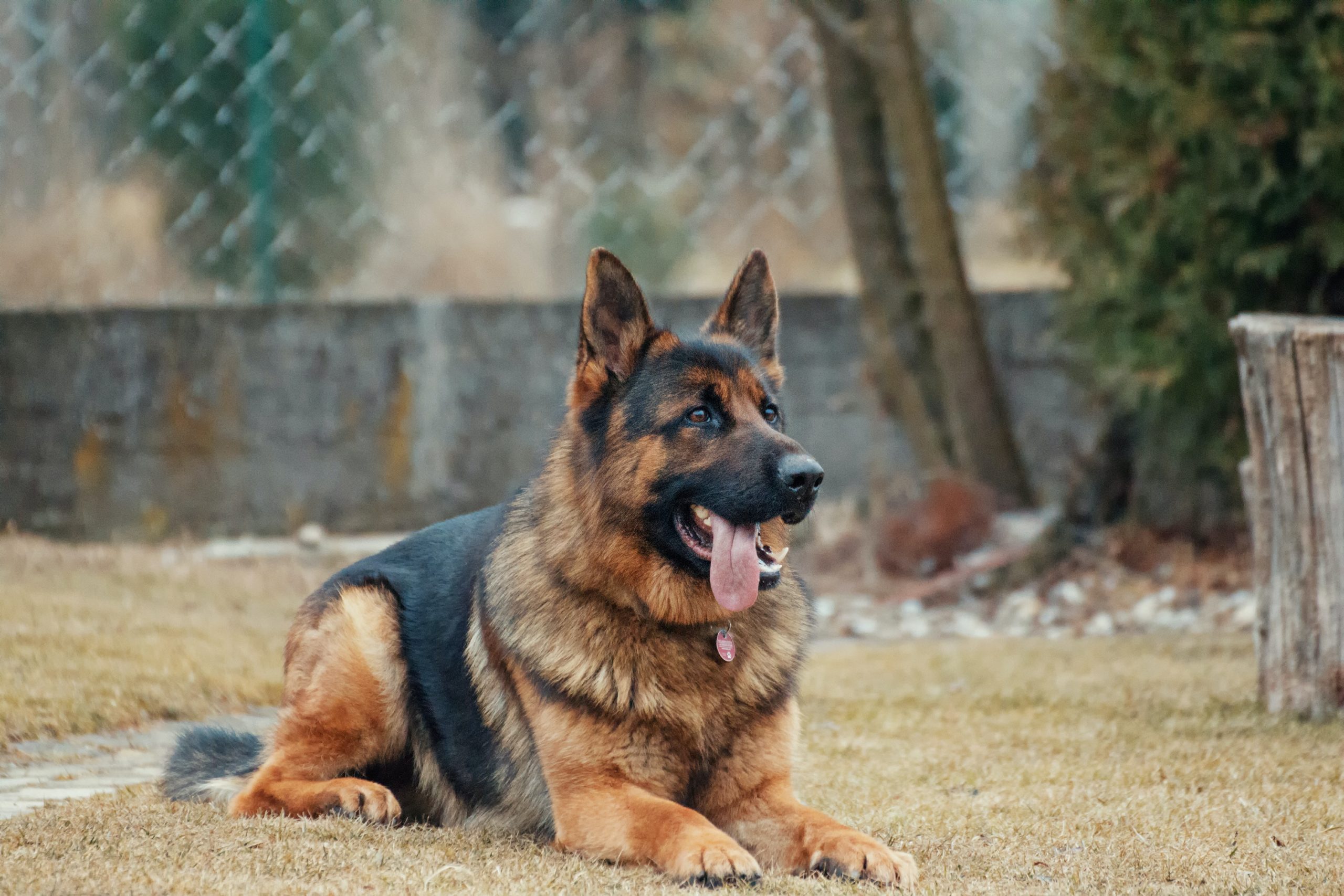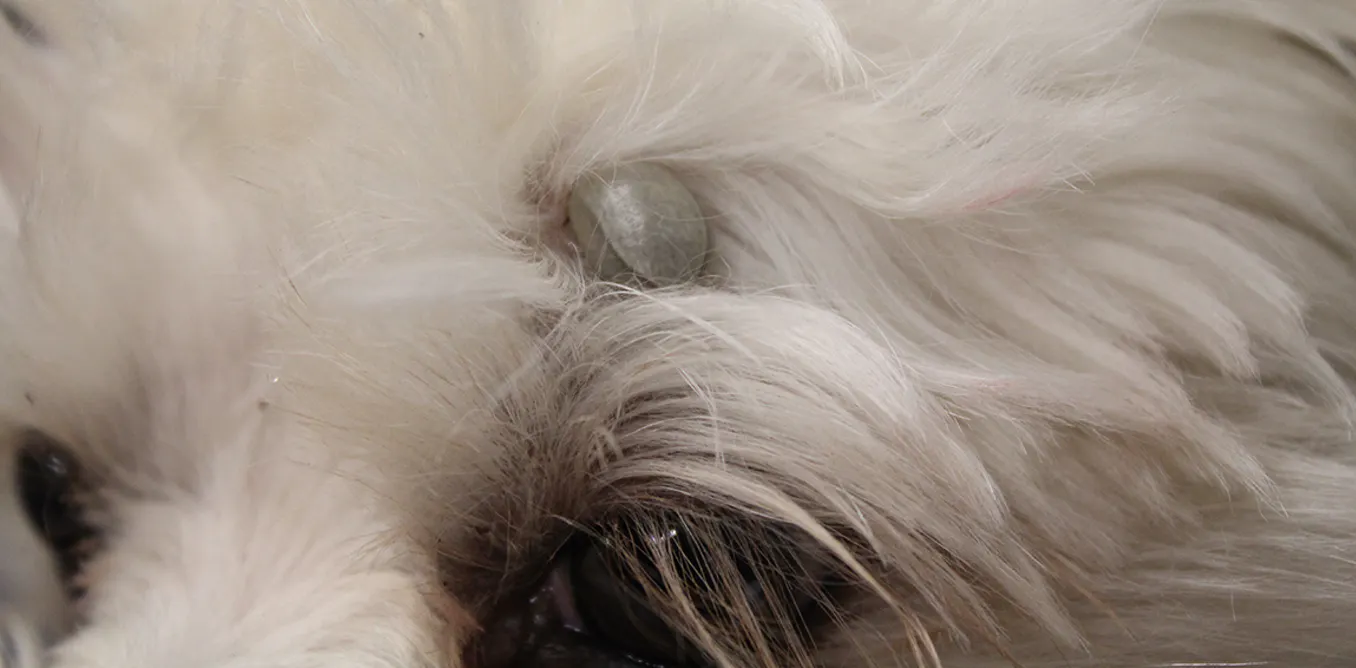Skin tumours are some of the most common tumours seen in the dog and cat, especially in Australia and New Zealand where there is a high incidence of solar-induced skin cancer.
There are many different types of skin tumours, but the tricky part is that different skin tumours can look alike and the same tumour may not always look the same. It is also not possible to tell if a tumour is benign or malignant by look or feel alone. Therefore, whenever you notice a lump or bump, or even an itchy or bleeding sore on your pet that isn’t healing, it is best to have it looked at by your vet.
Cause
There is no consistent cause for skin tumours. There are solar radiation induced tumours, such as squamous cell carcinoma (skin cancer) and haemangiosarcoma (cancer of the blood vessel walls). Some have genetic links, such as sebaceous adenomata in Poodles, while others have infectious causes, for example with viral papillomatosis.
Diagnosis
The majority of skin tumours in dogs are benign, whereas in cats they are mostly malignant. Benign skin tumours are usually slow growing, well defined and mobile over underlying structures. Malignant tumours tend to grow faster, infiltrate into adjacent tissue and may become red, inflamed and ulcerated.
However, the physical appearance of the tumour is not always a guide to how it will behave. Leaving it and waiting to see what happens isn’t usually a good option – they aren’t called growths for nothing and may become too large to remove or spread and become life-threatening – and simply removing the lump may not be warranted, for example if it is a secondary tumour. The extent of the surgery required depends on the type of tumour. A malignant tumour needs a much wider margin of excision than a benign tumour to prevent recurrence. Surgery may need to be repeated to remove more tissue if a pathology report reveals that a tumour is malignant.
A diagnosis is essential before a tumour can be treated successfully. After palpating the tumour and surrounding lymph nodes, along with a thorough physical examination to check for other lumps or unusual signs, your vet may wish to take a sample of the tumour. The simplest method is by fine needle aspiration, but for more information a core needle biopsy or dermal punch may be recommended. The latter methods may require heavy sedation plus a local or general anaesthetic; these may be more expensive but offer the best sample for a definitive diagnosis.
Treatment
Complete surgical excision (resection) is the primary treatment of choice for most tumours. A pathology report will allow your vet to determine the extent of surgery required, plus the choice of follow-up therapies.
For malignant tumours, a wide surgical excision is required and your vet may recommend chemotherapy. Radiation may be useful to treat local disease that cannot be removed surgically, or where the tumour was not removed completely through surgery.
Mast Cell Tumours
The mast cell tumour is the most significant malignant skin tumour affecting dogs. These tumours originate from mast cells, which contain a large array of bioactive molecules that can have many different effects on the body, for example: ulcers in the stomach and intestines, enlarged spleen and liver, and changes in the blood cells.
Mast cell tumours may develop anywhere on your dog’s body surface as well as in internal organs, but the limbs, ventral abdomen, and thorax are the most common sites. Single or multiple tumours can develop. The difficulty with mast cell tumours is that they can look and feel like anything, including soft masses under the skin that can feel exactly like harmless lipomas.
Your vet can carry out a fine needle aspiration to diagnose mast cell tumours. While the majority of mast cell tumours do not spread (metastasise), they are very aggressive locally and usually require surgical excision. Additional treatment, such as radiation and chemotherapy, depends on the grade of tumour identified by pathology. Regular re-checks for recurrence, metastasis, or new cutaneous masses are recommended.
Cutaneous Squamous Cell Carcinoma
In dogs the most common form of this disease is solar-induced, usually on the nose or ventral abdomen. It occurs most commonly in dogs with less pigmentation and sparser hair in these areas, especially those with a history of sunbathing. These tumours are malignant, but metastasis is uncommon.
Surgical resection is often difficult due to the wide extent of local disease, so prevention is the best treatment – keep susceptible dogs indoors during the middle of the day, or provide a sunsuit. Tattooing has been found to be ineffective, as it does not offer protection to the deeper layers of the skin where the UV rays penetrate.
Another form of the disease in dogs is seen under the toenails (subungual). These tumours may be mistaken for nail-bed infections in the early stages. Subungual disease has a higher risk of malignancy and chemotherapy may be useful in conjunction with surgical resection in these cases.
In cats, solar-induced squamous cell carcinoma is the most common form of the disease, accounting for around 50% of skin tumours seen in cats in Australia and New Zealand. It is seen most often on the face involving the nose, ears and eyelids. Again, the metastatic potential for these tumours is low, but surgical resection is often difficult. The highest success rates are seen with surgery and radiation. Cryotherapy has been used with variable success.
Soft Tissue Sarcoma
There are a variety of forms of soft tissue sarcomas. While many have a low metastatic potential, they can be highly invasive locally. In dogs, these tumours can arise anywhere on or in the body. The location can determine the amount of problem that they cause due to the difficulty in achieving complete surgical resection. Palpation can be misleading and in some cases the tumour can extend up to 5cm from the edge of where the mass can be felt. These tumours can also feel similar to other skin tumours, including lipomas.
Surgery is the best form of treatment. Referral to a specialist surgeon may be required. Radiation can be useful as an adjunct therapy for local control, while chemotherapy may be useful for high grade tumours with a high metastatic potential.
Dermal Haemangiosarcoma
This is seen most often in dogs but can also be seen in cats. The solar-induced form of the disease has been seen in both species. Multiple lesions may be present but they are usually small, confined to the dermis (the upper layer of the skin) and are mostly benign. Surgery is the treatment of choice.
Non-solar induced disease in dogs may be dermal (relatively benign), subcutaneous (moderately malignant) or involving the muscle layers (highly malignant). Treatment varies accordingly and is also dependent on whether the tumour is a primary skin tumour or a metastatic lesion from an internal primary tumour.
Melanoma
Melanomas are relatively common in dogs, however, they are not associated with solar damage as they are with humans. They can be benign or malignant and can occur anywhere on the body. Tumours that arise on hairless areas, such as the lips or nail beds, are more likely to be malignant. Breed is also an important factor with most tumours: in Doberman Pinschers and Miniature Schnauzers they are benign, while the majority in Miniature Poodles are malignant.
The treatment of choice for melanomas is surgical resection. With malignant melanomas, chemotherapy is often used as an adjunct therapy.
Histiocytic Tumours
The most common tumour in dogs is the histiocytoma or button tumour. This is a benign tumour that can spontaneously resolve. Occasionally multiple lesions can be seen. The main concern is histiocytic sarcoma, which can be an internal disease with lesions in the skin and subcutaneous tissues in many cases. The Bernese Mountain Dog is most at risk, with the disease also seen in Labradors, Retrievers and Rottweilers.
Secondary Skin Tumours
There are some tumours that have some predilection to metastasise to the skin, including renal tumours, salivary tumours and lung tumours. If you suspect that metastasis is occurring, talk to your vet for further investigation.




